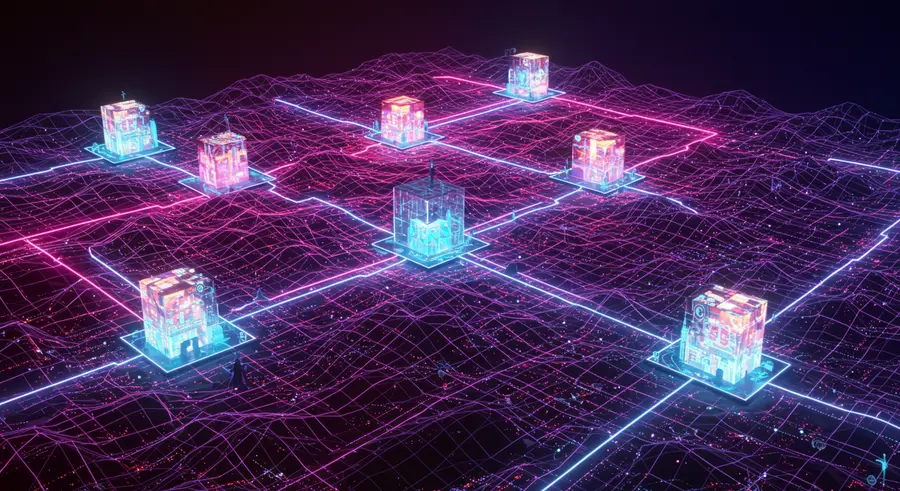The Vision of a Connected Metaverse
Imagine a digital realm where your avatar, virtual assets, and achievements seamlessly transition between different games, social platforms, and work environments. This is the promise of interoperability in the metaverse—a future where digital boundaries dissolve, and users can move freely across disparate virtual worlds, carrying their digital identities and possessions with them. Without true interoperability, the metaverse risks becoming a collection of isolated, proprietary silos, much like the early days of the internet before standardized protocols emerged.

The concept extends beyond mere technical compatibility. It encompasses the ability for diverse platforms, applications, and content to "speak" to each other, fostering a truly unified and dynamic digital experience. This is crucial for user adoption and for unleashing the creative and economic potential of the metaverse.
Key Pillars of Interoperability
1. Digital Identity and Avatars
Your digital identity in the metaverse should be persistent and transferable. This means your avatar, its appearance, and associated data should be recognizable and usable across different platforms. Technologies like decentralized identifiers (DIDs) and verifiable credentials are being explored to enable self-sovereign digital identities that users fully control.
2. Virtual Asset Portability
One of the most exciting aspects of an interoperable metaverse is the ability to own and transfer virtual assets—from clothing and vehicles to digital art and land—between different environments. Blockchain technology and Non-Fungible Tokens (NFTs) play a pivotal role here, providing a secure and transparent way to prove ownership and facilitate the transfer of unique digital items. Imagine buying a virtual jacket in one game and wearing it to a concert in another virtual world, or using a digital car purchased on one platform to drive in a different metaverse experience.
3. Data Exchange and Semantic Interoperability
Beyond identities and assets, the seamless flow of data is essential. This includes user-generated content, environmental data, and even the logic and rules governing virtual spaces. Semantic interoperability, which ensures that different systems can understand and interpret data in the same way, is a complex but vital challenge. This requires agreed-upon standards for data formats, metadata, and APIs.
4. Cross-Platform Experiences and Protocols
Ultimately, interoperability aims to enable a seamless flow of experiences. This means allowing users to participate in events, collaborate on projects, or simply socialize across different metaverse platforms without encountering jarring technical barriers. The development of open standards and protocols, similar to HTTP for the web, will be fundamental to achieving this vision. Initiatives like the Open Metaverse Alliance for Web3 (OMA3) are working towards defining these crucial standards.
Challenges and Solutions
Achieving full interoperability is no small feat. It involves overcoming significant technical, economic, and even philosophical challenges:
- Technical Complexity: Different platforms are built on diverse tech stacks, programming languages, and rendering engines. Bridging these disparate systems requires robust and flexible translation layers.
- Proprietary Interests: Many large tech companies have an incentive to create walled gardens, retaining users and their data within their own ecosystems. Encouraging adoption of open standards will require significant industry collaboration and perhaps regulatory pressure.
- Security and Trust: Ensuring the secure transfer of digital assets and identities across multiple platforms is paramount. Robust security protocols and decentralized trust mechanisms are essential.
- Economic Models: How will value be exchanged and revenue generated in an open, interoperable metaverse? New economic models that incentivize collaboration over exclusivity will be crucial. For those interested in understanding new financial paradigms and how data analysis can inform decisions in these evolving digital economies, exploring tools that provide market insights can be incredibly beneficial.
- Governance: Who will set and enforce the standards for interoperability? A decentralized and community-driven governance model might be necessary to ensure fairness and widespread adoption.
Solutions are emerging from various fronts, including open-source development, blockchain innovation, and collaborative industry alliances. The focus is on creating a modular and extensible architecture for the metaverse, where different components can interoperate seamlessly.
The Future: A Truly Unified Digital Universe
The journey towards a fully interoperable metaverse is long, but the potential rewards are immense. A truly interconnected digital universe would foster unprecedented levels of creativity, innovation, and social connection. It would empower users with greater control over their digital lives and assets, moving beyond the current paradigm of centralized platforms. As technology advances and industry collaboration deepens, we are moving closer to a future where the lines between virtual worlds blur, creating a richer, more expansive digital frontier for everyone.
Further reading on the topic: World Economic Forum on the Open Metaverse, Forbes on Interoperability.